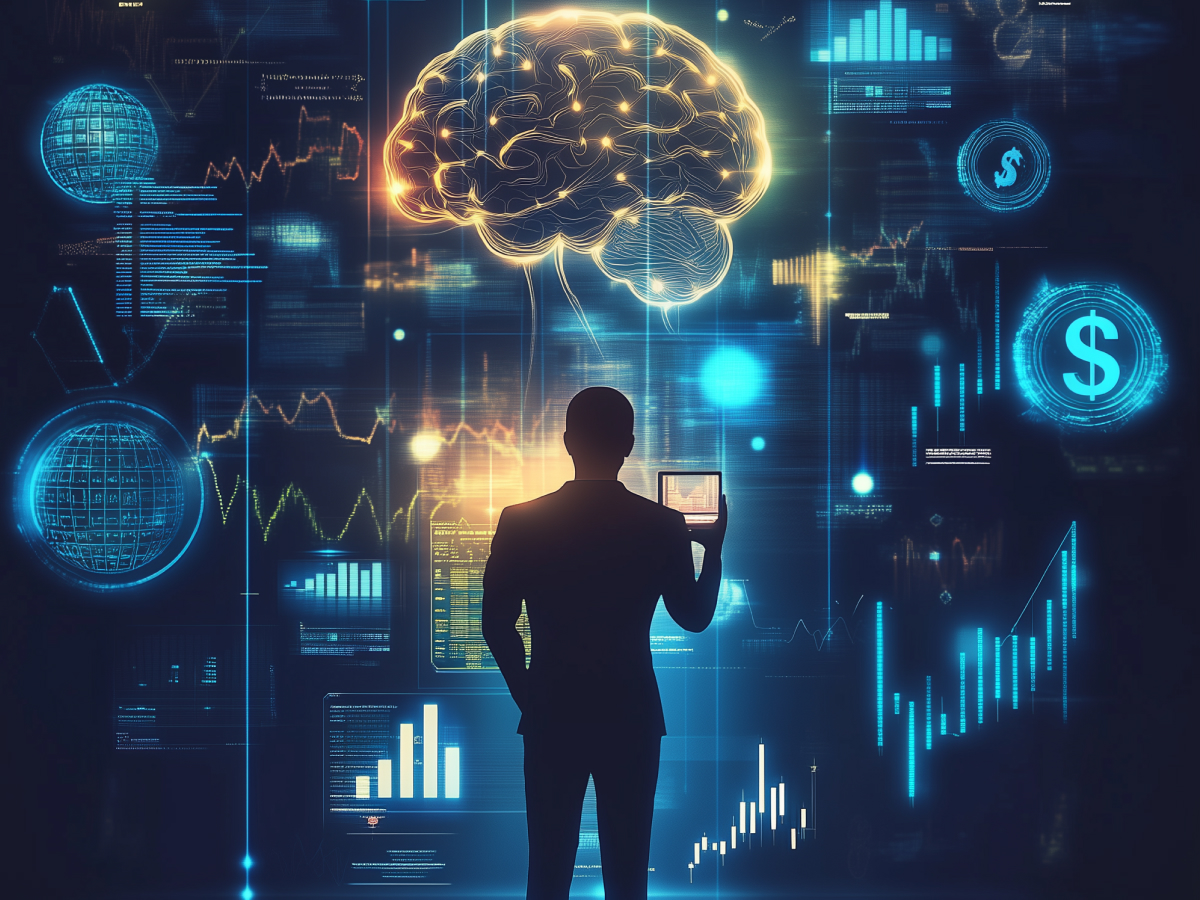OpenAI’s deep research
AI is changing fast. What used to be a tool for generating quick responses is now entering a new phase, one where it can tackle complex, multi-step research tasks with precision. OpenAI’s latest feature, deep research, is built for professionals who need more than just a fast answer. This tool synthesizes large amounts of information, verifies sources, and documents its reasoning.
For executives in finance, engineering, and policy, this is a major shift. Research-heavy roles often demand hours of analysis, cross-checking, and filtering out unreliable sources. Deep research automates this process, delivering structured insights with citations, making verification easier. The key here is accuracy and reliability. Unlike traditional AI models that prioritize fast, one-step responses, this is about depth.
Right now, it’s available for OpenAI’s Pro users at $200 per month, with a limit of 100 queries. That cap is temporary. OpenAI has already said it plans to scale up efficiency and processing speed, increasing availability. It’s clear they’re moving toward AI that actually thinks through problems systematically.
AI that researches like a human but at scale
At the core of deep research is a refined version of OpenAI’s o3 model, optimized specifically for web browsing and data analysis. Instead of just retrieving basic answers, this AI adapts its research as it learns more, much like a human researcher. It searches the internet, pulls in information from PDFs, images, and text, and adjusts its approach based on what it finds.
That’s a big deal. Standard AI models follow a linear path: get a prompt, process it, and give an answer. Deep research, however, works iteratively, refining results as it goes. The result? More detailed and nuanced insights, tailored to real-world use cases.
For C-suite leaders, this is a productivity revolution. Teams that previously spent days or weeks compiling reports can now get structured, multi-source research in a fraction of the time. And because every finding is documented, decision-making becomes more transparent. In industries where precision is everything, finance, law, scientific research, this is an edge that matters.
Speed vs. depth
Not everything about deep research is faster, yet. Unlike standard ChatGPT queries, which generate responses in seconds, deep research can take between five and thirty minutes per request. That’s because it’s doing more than retrieving data, it’s analyzing, cross-referencing, and compiling a structured report.
For some, this might seem slow. But let’s be clear: quality research doesn’t happen instantly. The trade-off here is between speed and depth. Most AI tools prioritize quick answers because that’s what general users expect. But if you’re making billion-dollar decisions, you don’t need fast, you need right.
Executives who deal with market trends, policy impacts, or engineering breakthroughs will likely accept the longer processing time in exchange for real insights. And let’s not forget, AI efficiency is only going to improve. OpenAI has already hinted that future iterations will run faster and offer higher query limits.
This shift signals something bigger: AI is moving from casual use into mission-critical applications. That’s the difference between a chatbot that answers your emails and a research assistant that actually helps you make high-stakes decisions.
More reliable, but not perfect
Deep research is a step forward, but it’s not flawless. OpenAI itself admits that, while the model hallucinates fewer facts than previous versions, errors still happen. And sometimes, even when the information is correct, the AI struggles to convey uncertainty properly. That’s a real challenge in decision-making, misplaced confidence can be just as dangerous as outright misinformation.
Another issue? Distinguishing between reliable sources and misleading content. AI is only as good as the data it processes, and the internet is filled with both high-quality research and complete nonsense. OpenAI’s model is trained to prioritize authoritative sources, but it’s not foolproof.
So what does this mean for executives? It means AI is getting closer to being a trusted research tool, but human oversight is still essential. Think of deep research as an enhanced analyst, one that works tirelessly, processes massive amounts of data, and delivers structured insights. But just like any analyst, its work needs to be checked.
For businesses, this is a turning point. AI-driven research is now viable for real-world applications. And while it still has limitations, the companies that figure out how to integrate it effectively will move faster, and smarter, than the rest.
AI is changing and so is the way we use it
Artificial intelligence is maturing, and it’s happening fast. A year ago, the big discussion was about whether AI could generate decent text or images. Now, we’re moving beyond that, into AI that actually thinks through problems. OpenAI’s deep research is part of this evolution.
Early on, AI tools were designed to give quick answers because users expected speed. And for casual users, that worked. But professionals, people using AI for market research, policy analysis, or technical insights, need something deeper. That’s where deep research comes in.
This is a fundamental change in how AI is being used. Instead of just automating simple tasks, we’re seeing AI take on complex cognitive work, the kind of research, synthesis, and analysis that would normally take teams of people days or weeks. For high-level executives, this is a sign of what’s coming.
The disruption nobody is talking about
Many high-paying careers start with entry-level research roles. Analysts in finance, consulting, and law spend their first years digging through data, summarizing reports, and compiling insights. It’s how they build expertise.
But what happens when AI does that work better, and faster, than a junior analyst? Companies might start skipping those entry-level hires entirely. And that could cause a serious talent gap. If fewer people enter the workforce in research-heavy fields, there will be fewer trained professionals ready to step into senior roles down the line.
This isn’t just speculation, it’s already happening in industries like legal research and financial analysis, where AI-driven automation is cutting down on the need for junior staff. It’s a classic case of technology outpacing workforce adaptation.
For executives, the takeaway is clear: AI will change how research is done and it will change who does it. Companies that plan ahead, retrain employees, and rethink their hiring pipelines will come out ahead. Those that don’t? They may find themselves struggling to fill key roles in the future.
The future of AI
One of the biggest trends in AI right now? Specialization. Instead of building one AI to do everything, companies are developing models fine-tuned for specific tasks. OpenAI’s deep research is a prime example, but it’s not the only one.
Jason Andersen points out that Anthropic has been leading this trend, developing AI models focused specifically on coding and deep research. And OpenAI’s move into specialized AI means they’re betting on a future where AI tools are built for professionals, not just casual users.
Why does this matter? Because the AI market is shifting. We’re moving away from one-size-fits-all chatbots and toward task-optimized AI. That’s a big deal for businesses. Instead of using general AI for everything, companies will be able to deploy highly specialized models that fit their exact needs.
For executives, this is a wake-up call. The companies that integrate these specialized AI models early will gain an edge, whether it’s in research, decision-making, or automation. The rest? They’ll be playing catch-up.
Key executive takeaways
- Advanced research capabilities: OpenAI’s deep research agent offers multi-step, citation-backed insights that improve the quality of complex analyses. Leaders should consider integrating such tools to improve strategic decision-making with verified data.
- Increased productivity and precision: In automating time-intensive research tasks, this technology cuts down report generation times while bringing greater reliability. Decision-makers can use these efficiencies to drive faster, more informed business strategies.
- Workforce implications and skill shifts: As AI takes over entry-level research tasks, organizations may see a shift in workforce requirements. It is key to invest in upskilling current employees to make sure they can adapt to more advanced, strategic roles.
- Specialized AI for competitive advantage: The trend toward task-specific AI models, exemplified by OpenAI’s approach, signals a move away from one-size-fits-all solutions. Executives should evaluate specialized AI tools to maintain a competitive edge in targeted areas like finance, policy, and engineering.





